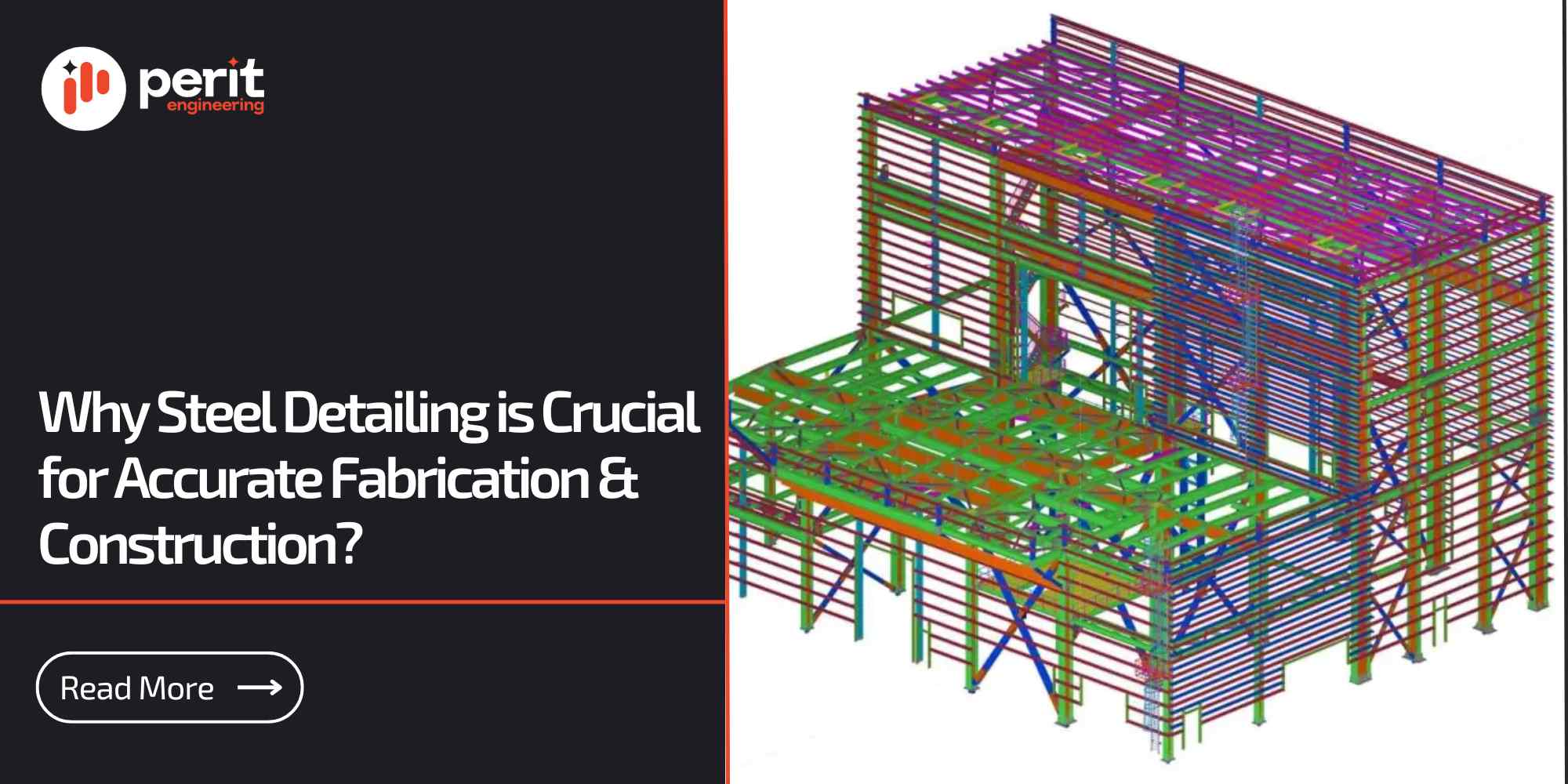Steel detailing is a critical process in the construction industry that ensures accuracy, efficiency, and structural integrity in steel fabrication and installation. Without proper detailing, construction projects can face delays, cost overruns, and safety hazards.
This blog explores why steel detailing is essential for accurate fabrication and seamless construction, highlighting its importance, process, benefits, and impact on project success.
What is Steel Detailing?
Steel detailing is the process of creating detailed drawings, plans, and models used in the fabrication and erection of steel structures. These detailed plans provide precise specifications for structural components such as beams, columns, braces, trusses, and connections.
The detailing process ensures that every steel component fits perfectly, allowing smooth fabrication and installation at the construction site. Structural engineers, fabricators, and contractors rely on steel detailing to prevent errors and maintain industry compliance.
The Role of Steel Detailing in Fabrication
Fabrication is the process of cutting, welding, and assembling steel components before they are transported to the construction site. Accurate steel detailing ensures that:
- Exact measurements and specifications are provided for cutting, drilling, and welding.
- Minimizes material wastage, reducing costs and optimizing resources.
- Avoids errors that can lead to costly rework and project delays.
- Improves shop efficiency, allowing fabricators to follow precise instructions.
For example, even a small miscalculation in a connection detail can result in improper alignment, leading to rework, delays, and budget overruns.
The Role of Steel Detailing in Construction
Once the steel components are fabricated, they must be accurately assembled on-site. Steel detailing plays a crucial role by:
- Providing clear erection plans for smooth assembly of structural components.
- Ensuring proper alignment and fit, reducing field modifications.
- Enhancing safety standards, preventing on-site accidents caused by misaligned structures.
- Reducing construction time, enabling faster project completion.
Without proper detailing, construction teams may struggle with assembly, leading to project inefficiencies, increased labor costs, and potential structural failures.
The Steel Detailing Process: Step-by-Step
Steel detailing involves a systematic workflow to ensure precision and compliance with engineering standards. Here’s how it works:
🔹 Step 1: Understanding Project Requirements
Detailers analyze architectural and structural drawings to extract design specifications.
🔹 Step 2: Creating 3D Models & Shop Drawings
Using software like Tekla, AutoCAD, or SDS/2, detailers develop 3D models and fabrication drawings with precise dimensions.
🔹 Step 3: Generating Erection Plans
Erection plans guide the on-site installation team on how to assemble the steel components correctly.
🔹 Step 4: Quality Checks & Compliance
Before finalizing the detailing, the drawings undergo quality control checks to ensure compliance with AISC, NISD, and international standards.
🔹 Step 5: Fabrication & Construction Execution
The approved drawings are sent to fabricators and construction teams, ensuring smooth execution on-site.
Benefits of Accurate Steel Detailing
Steel detailing provides numerous advantages, making it an indispensable part of modern construction projects.
✅ 1. Enhanced Accuracy & Precision
• Eliminates errors in fabrication and installation.
• Ensures proper alignment, load distribution, and structural integrity.
✅ 2. Reduced Project Costs
• Optimizes material usage, minimizing wastage.
• Prevents costly rework due to detailing errors.
✅ 3. Faster Project Completion
• Facilitates seamless fabrication & erection, reducing downtime.
• Ensures smooth coordination between architects, engineers, and fabricators.
✅ 4. Improved Safety Standards
• Ensures compliance with building codes and safety regulations.
• Reduces the risk of structural failures and on-site accidents.
✅ 5. Seamless Collaboration & Coordination
• Allows real-time collaboration between teams using BIM-integrated detailing.
• Enhances communication between engineers, contractors, and project managers.
The Role of Software in Modern Steel Detailing
Today, steel detailing relies on advanced software tools to ensure efficiency and accuracy.
📌 Tekla Structures – 3D steel modeling and detailing.
📌 AutoCAD – 2D drafting and detailing for fabrication.
📌 SDS/2 – Automated detailing for steel connections.
📌 Revit & Navisworks – BIM integration for design coordination.
These tools enhance visualization, automate calculations, and detect clashes, reducing errors before fabrication.
Conclusion: Why Steel Detailing is Essential
Steel detailing is the backbone of fabrication and construction, ensuring:
✅ Precision in structural components
✅ Seamless coordination between teams
✅ Faster, error-free project execution
✅ Compliance with global engineering standards
Without accurate detailing, fabrication errors, structural misalignments, and project delays can disrupt entire construction projects. Investing in high-quality steel detailing leads to cost savings, efficiency, and long-term structural stability.
📌 Looking for expert steel detailing solutions? Contact Perit Engineering today to ensure accuracy, compliance, and efficiency in your next project!



Comments are closed